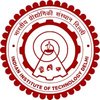Filter interviews by
IIT Guwahati Junior Research Fellow Interview Questions, Process, and Tips
IIT Guwahati Junior Research Fellow Interview Experiences
2 interviews found
I applied via Company Website and was interviewed in Mar 2024. There was 1 interview round.
(13 Questions)
- Q1. How do you train semi supervised machine learning models?
- Ans.
Train semi supervised machine learning models by using a combination of labeled and unlabeled data.
Start by training a model on a small amount of labeled data
Use the trained model to make predictions on the unlabeled data
Incorporate the predictions into the training set and retrain the model
Repeat the process until the model reaches a satisfactory level of performance
- Q2. What are the parametric types of machine learning?
- Ans.
Parametric types of machine learning are algorithms that make assumptions about the functional form of the relationship between inputs and outputs.
Parametric models have a fixed number of parameters that are learned from the training data.
Examples include linear regression, logistic regression, and linear SVM.
They are often simpler and faster to train compared to non-parametric models.
Parametric models are suitable for...
- Q3. What are the types of Machine Learning?
- Ans.
Types of Machine Learning include supervised learning, unsupervised learning, semi-supervised learning, reinforcement learning, and self-supervised learning.
Supervised Learning: The model is trained on labeled data.
Unsupervised Learning: The model is trained on unlabeled data.
Semi-Supervised Learning: A combination of labeled and unlabeled data is used for training.
Reinforcement Learning: The model learns through trial...
- Q4. Explain Eigen value
- Ans.
Eigen value is a scalar associated with a square matrix that represents how a transformation stretches or compresses space along its eigenvectors.
Eigen values are solutions to the characteristic equation det(A - λI) = 0, where A is the matrix, λ is the eigen value, and I is the identity matrix.
They represent the factor by which the eigenvector is scaled during the transformation.
Eigen values can be real or complex numb...
- Q5. What is Eigen Vector
- Ans.
Eigen vector is a vector that does not change its direction when a linear transformation is applied to it.
Eigen vectors are used in linear algebra to understand the behavior of linear transformations.
They represent directions along which a linear transformation has a simple effect, such as scaling.
Eigen vectors are associated with eigenvalues, which represent the scaling factor of the eigenvector.
For example, in a 2x2 ...
- Q6. What is the maths behind PCA
- Ans.
PCA is a mathematical technique used for dimensionality reduction by finding the principal components of a dataset.
PCA involves calculating the eigenvectors and eigenvalues of the covariance matrix of the data.
The eigenvectors represent the directions of maximum variance in the data, while the eigenvalues indicate the amount of variance along each eigenvector.
The principal components are the eigenvectors corresponding ...
- Q7. If you are given a small dataset of 300 samples, what would you choose over a neural network with more number of hidden layers or a neural network with one hidden layer. Justify your explanation in terms o...
- Ans.
For a small dataset of 300 samples, a neural network with one hidden layer would be more suitable for better accuracy.
A neural network with one hidden layer is simpler and less prone to overfitting on a small dataset.
With a small dataset, a complex neural network with more hidden layers may lead to overfitting and poor generalization.
A neural network with one hidden layer can capture the basic patterns in the data effe...
- Q8. Can a neural network accept complex number as input?
- Ans.
Yes, a neural network can accept complex numbers as input.
Neural networks can be designed to accept complex numbers as input by using complex-valued weights and activations.
Complex-valued neural networks have been used in applications such as signal processing and image recognition.
Complex numbers can represent both magnitude and phase information, making them useful for certain types of data.
Complex-valued neural netw...
- Q9. What is kmeans algorithm, Explain it?
- Ans.
kmeans algorithm is a clustering algorithm that partitions data into k clusters based on similarity.
Divides data points into k clusters based on distance from centroid
Iteratively assigns data points to nearest centroid and updates centroids
Converges when centroids no longer change significantly
Commonly used in machine learning for clustering data points
- Q10. What are the evaluation metrics?
- Ans.
Evaluation metrics are used to measure the performance or effectiveness of a system, project, or process.
Evaluation metrics can include quantitative measures such as accuracy, precision, recall, F1 score, and AUC-ROC.
They can also include qualitative measures such as user satisfaction, usability, and user engagement.
Evaluation metrics help in assessing the success of a project or system and identifying areas for improv...
- Q11. Machine learning vs Deep Learning
- Ans.
Machine learning is a subset of artificial intelligence that focuses on developing algorithms to make predictions based on data, while deep learning is a subset of machine learning that uses neural networks to learn from large amounts of data.
Machine learning involves developing algorithms that can learn from and make predictions or decisions based on data.
Deep learning is a subset of machine learning that uses neural ...
- Q12. How do you select k value in kmeans algorithm?
- Ans.
Selecting k value in kmeans algorithm involves using techniques like elbow method and silhouette score.
Use the elbow method to find the point where the rate of decrease sharply shifts, indicating the optimal k value.
Calculate silhouette score for different k values and choose the one with the highest score.
Consider domain knowledge and the specific problem requirements when selecting k value.
Experiment with different k...
- Q13. How do you calculate precision & recall for n x n confusion matrix?
- Ans.
Precision and recall can be calculated using values from a confusion matrix.
Precision = TP / (TP + FP)
Recall = TP / (TP + FN)
Where TP = True Positive, FP = False Positive, FN = False Negative
For an n x n confusion matrix, sum the values in each row and column to get TP, FP, and FN for each class
Interview Preparation Tips
- Based on the project
Skills evaluated in this interview
(2 Questions)
- Q1. Completely on projects
- Q2. Signals and systems basics
Interview Preparation Tips
Top trending discussions






IIT Guwahati Interview FAQs
Some of the top questions asked at the IIT Guwahati Junior Research Fellow interview -
Tell us how to improve this page.
IIT Guwahati Interviews By Designations
Interview Questions for Popular Designations
- Senior Research Fellow Interview Questions
- Research Fellow Interview Questions
- Post Doctoral Fellow Interview Questions
- Project Fellow Interview Questions
- Teaching Fellow Interview Questions
- Fellowship Interview Questions
- Post Doctoral Research Fellow Interview Questions
- Female Staff Nurse Interview Questions
- Show more
People are getting interviews through
Interview Questions from Similar Companies
IIT Guwahati Junior Research Fellow Reviews and Ratings
based on 4 reviews
Rating in categories
|
PHD Research Scholar
18
salaries
| ₹3.4 L/yr - ₹5 L/yr |
|
Junior Research Fellow
17
salaries
| ₹3 L/yr - ₹5.2 L/yr |
|
Assistant Project Engineer
17
salaries
| ₹3 L/yr - ₹4.7 L/yr |
|
Research Scholar
16
salaries
| ₹3.5 L/yr - ₹6 L/yr |
|
Teaching Assistant
12
salaries
| ₹1 L/yr - ₹7.4 L/yr |

IIT Bombay

IIT Delhi

IIT Kanpur

IIT Kharagpur
Calculate your in-hand salary
- Home >
- Interviews >
- IIT Guwahati Interview Questions >
- IIT Guwahati Junior Research Fellow Interview Questions










